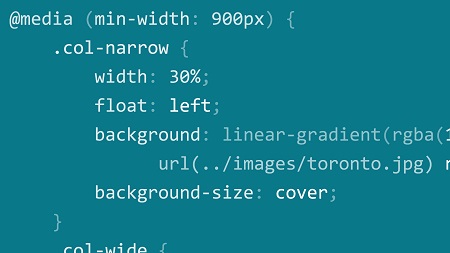
English | MP4 | AVC 1280×720 | AAC 48KHz 2ch | 2h 21m | 365 MB
Once you’re familiar with the basics of CSS, you’re ready to expand your skillset and tackle more challenging concepts. In this course—the second installment in a series—bolster your existing CSS knowledge, and learn advanced concepts that can help you write more efficient code. Join Christina Truong as she explains how to work with a variety of advanced selectors, when to use the float, display, and position properties, and how to get started with the CSS browser developer tools and leverage them when debugging your front-end code. She also explains how to take a mobile-first approach to responsive web design. Plus, this course provides you with an opportunity to add more features to the online résumé project you started in CSS Essential Training 1.
Topics include:
- Reviewing CSS syntax
- Reviewing simple selectors and attribute selectors
- Using pseudo-class selectors and pseudo-element selectors
- Reviewing the CSS box model
- Adding a menu to your project
- Using float, display, and position
- Debugging CSS
- Resetting stylesheets
- Working with background images
- Exploring a mobile-first approach for responsive web design
- Creating flexible and fluid layouts
Table of Contents
01-Welcome
02-What you should know
03-Using the exercise files
04-CSS syntax review
05-Basic and attribute selectors
06-Combinator selectors
07-Pseudo-class selectors
08-Pseudo-element selectors
09-Practicing with advanced selectors
10-Box model review
11-Float and display review
12-Horizontal navs with the display property
13-Horizontal navs with the float property
14-Practicing with the nav element
15-Positioning
16-Practicing with fixed navigation
17-Practicing with positioning elements
18-Float, display, and position
19-Layers and the z-index property
20-Browser development tools
21-Debugging CSS
22-Resetting stylesheets
23-Icon fonts
24-The background property
25-Background shorthand syntax
26-Alpha transparency and gradients
27-Practicing with backgrounds and gradients
28-Introduction to responsive design
29-Mobile friendly and mobile first
30-Creating flexible and fluid layouts
31-Introducing media queries
32-Using media queries
33-Testing responsive layouts
34-Device emulation
35-Revisiting your CSS
36-Next steps
Resolve the captcha to access the links!